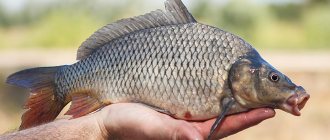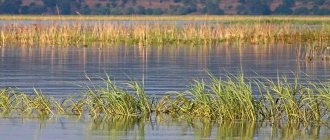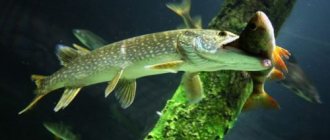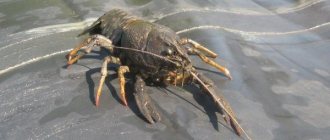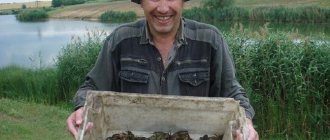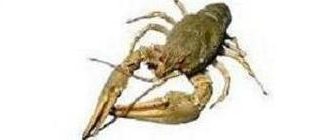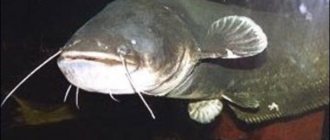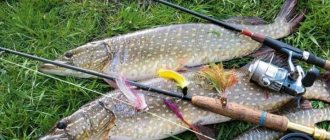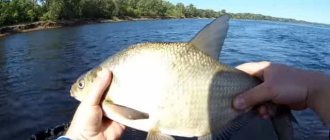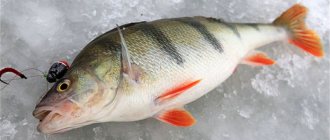Catching crayfish is popular not only because of the tasty and healthy meat of the catch, but also because of the fascination of this process, which requires endurance and perseverance from a person. There are various methods, but today the most commonly used are special crayfish traps, which are devices made of fairly strong wire, metal mesh and cord. However, to implement this process, you will need to know not only its main features, but also the prohibitions and restrictions in force in accordance with the law. All these issues will be discussed in more detail in this article.
What bodies of water do they live in?
Today there is a very common misconception that crayfish are unpretentious to the environment and can live in virtually any body of water. In fact, this is not so and these arthropods are only grown in places that meet the following requirements:
- The water must be exclusively fresh, since even in a salty-fresh environment conditions are created that are unsuitable for full development.
- A sufficient indicator of oxygen concentration; in warm weather it should be at least 5 mg/l. For this reason, crayfish often coexist in reservoirs with various salmon fish species, which impose the same conditions on the environment.
- Moderate level of acidity, pH should be at least 6.5.
- A sufficient amount of lime, without which natural growth is impossible.
- Bottom surface with a solid structure and minimal silt content. For this reason, it is useless to try to search for and catch such prey in places with muddy, sandy or rocky bottoms, since they are not suitable for creating burrow-like dwellings.
Most often, crayfish choose rivers as habitats, but if all the above conditions are met, they can also be found in lakes, oxbow lakes and even streams.
When to catch crayfish
The current time of year has the greatest influence on catching crayfish; in accordance with this criterion, the following periods can be distinguished:
- In January or February, all arthropods hide most of the time in muddy holes and try not to get out, so fishing is unproductive.
- From March to April, a gradual awakening begins; you can start setting up fishing devices, but the catch will not be significant.
- From May to the end of June, you can’t count on a good catch, since arthropods are busy shedding their old shells and laying eggs.
- In July, a long period begins, which lasts until December, during which crayfish fishing is very effective. This is due to an increase in the activity of prey, which begins to look for food and explore the reservoir.
- September and October are periods for weight gain as the females begin to develop egg deposits. By mid-November or early December, crayfish gain significant mass.
Prey is most active at night, so fishing is most effective after sunset and until early morning; there is no point in installing crayfish traps during the daytime. It is also worth noting that all indicated periods are approximate, since they depend on the climatic characteristics of individual regions and the weather conditions of a particular season.
The best places for fishing in Belogorye
The Belgorod region does not have as many reservoirs as other regions. Despite this, fishing here is booming.
Within the Belgorod region there flow such rivers as the Northern Donets, Oskol, Seversky Donets, Tikhaya Sosna and others, which are included in the basins of rivers such as the Don and Dnieper. These rivers contain a wide variety of fish, so every angler will be able to catch the trophy that interests him.
In this region there are not only wild, but also cultivated ponds, where you can not only catch fish, but also relax, both alone and with the whole family or with friends.
Belgorod region: characteristic features of fishing
Fishing in Belogorye can be either free or paid. Free fishing is particularly popular, since it is possible to catch any fish. Therefore, it makes no sense to pay any more money for fishing on a paid reservoir, although there is the possibility of a guaranteed catch.
Despite this, paid reservoirs increasingly represent communities where you can not only go fishing, but also spend your free time profitably. In this regard, it should be noted that fishing in the Belgorod region is an exclusively positive emotion. Regardless of which reservoirs you fish on - wild or paid, there is a sufficient amount of fish here.
Features of fishing in the Belgorod region include:
- Huge species diversity of fish.
- Opportunity to catch a large specimen.
- A decent catch is guaranteed regardless of the time of year.
- Fishing is possible with any gear and any bait.
- The bulk of reservoirs are located within populated areas, so getting to them is not difficult.
- The rivers are not characterized by rapid currents, so fishing here does not have special conditions.
- Fishing is allowed both from a boat and from the shore.
- Weather conditions are not characterized by sudden changes in pressure and temperature, so the bite here is always stable.
- The beautiful places here are conducive not only to fishing, but also to relaxing.
What kind of fish is found in the local waters?
The following fish are found in almost all bodies of water:
- Perch.
- Carp.
- Crucian carp.
- Ide.
- Chub.
- Guster.
- Carp.
- Pike.
- Silver carp.
- Rudd.
- Gudgeon.
- Asp.
At the same time, it should be noted that in each specific reservoir the species diversity of fish may be different.
Reservoirs for fishing in Belogorye
Fishermen visit ponds, lakes and rivers. Each of the reservoirs has its own characteristics. Some of the most popular ones are:
- The Seversky Donets and Oskol rivers.
- Korochanskoye Reservoir.
- Ponds Znamenka, Stepanovka, Shigarovsky.
Seversky Donets River
This is the most visited river for most local and visiting fishermen. It is of particular interest in the area located closer to the Ukrainian lands: here it becomes somewhat wider, and its flow is not so fast. This river contains a sufficient amount of fish such as:
- Bream.
- Crucian carp.
- Pike.
- Roach.
- Zander.
- Ide.
- Perch.
- Som.
On the Seversky Donets River, fish are caught using a variety of gear, such as ordinary float rods, bottom rods and spinning rods. You can catch catfish with bottom tackle, especially in the evening hours, and with a regular float fishing rod you can catch crucian carp and bream.
The feeder is mainly fished downstream of the river, since there are quite a lot of fish in this area, although the bottom here is characterized as hard, with a fast current.
In this part of the river, the fish suffer from a lack of food supply, so they are hungrier and there are no problems with frequent bites.
If you fish from a boat, then there is a chance of catching large fish. Particularly attractive are areas with rapid currents where predatory fish hunt.
The Seversky Donets is characterized by the presence of heavily snowed areas, as it flows next to forest plantations. Therefore, there are many really catchy places on this river. Local fishermen use spinning rods and artificial baits of various models to catch predatory fish species.
In addition to large species of fish, this river also contains smaller species, such as roach, rudd and bleak, which are caught using ordinary float rods.
FISHING with a CAMERA on the SEVERSKY DONET
Oskol River
This river flows through the entire Belgorod region and is characterized as a quiet river with a calm flow.
It is better to fish here from a boat, looking for deeper areas where there is not much silt. On this river, spinning rods, bottom fishing rods and ordinary float gear are also considered the most popular.
The following species of fish are found in the Oskol River:
- Pike.
- Chub.
- Bream.
- Carp.
- Gudgeon.
- Som.
- Perch.
To catch predatory fish, you will have to arm yourself with spinning rods and artificial baits, such as spoons, wobblers and edible rubber. Pike, of which there are a huge number here, respond well to ordinary, oscillating spoons.
The most catchy time is spring, when fish after wintering prepare for spawning. During this period, fish move in schools and bite on common baits such as worms, bloodworms or maggots.
Fishing ponds in the Belgorod region
There are a sufficient number of fishing ponds in this area, both free and paid. Nowadays, paid ponds are much more popular among fishermen, since it is much more difficult to catch fish in ordinary reservoirs.
Paid fishing has some advantages. For example:
- High density of fish.
- Wide variety of fish.
- Close location to populated areas.
- More chances for a successful catch.
- Help from reservoir staff.
- Possibility of renting gear and other fishing equipment.
- Comfortable conditions for fishing.
- Possibility to fish for several days in comfort.
The most famous ponds that are regularly visited by fishermen are:
- “Znamenka”, where the cost of fishing will cost 350 rubles. Carp, carp, grass carp, pike perch and other fish are caught here.
- “White Well” at a price of 500 rubles for fishing. A variety of fish, including predatory ones, are also caught here.
- “Kamyshenka”, costing about 200-300 rubles for fishing. Carp, carp, grass carp, pike perch, etc. are caught.
- “Kuzkino” will cost about 600 rubles. A wide variety of fish are caught here.
- “Velikomikhailovka”, where you will have to pay about 300 rubles for fishing. Fish such as crucian carp, carp, perch, roach, grass carp, etc. are found in large quantities here.
The following free ponds are very popular among anglers:
- Zhukovka.
- Popov.
- Top.
- Vladimirovka.
- Oskolets.
Korochanskoye Reservoir
There are several reservoirs in this region, but Korochanskoye is considered the most famous. Firstly, this is one of the largest reservoirs in area, and secondly, it is the most densely populated with fish. Here the bite depends little on the time of year, so you can always count on a significant catch.
Here it is:
- Bream.
- Carp.
- Carp.
- Zander.
- Silver carp.
Fishing can be productive when fishing both from the shore and from a boat. Fish is caught here using well-known gear, such as a feeder, spinning rod and a classic fishing rod. You can attach a worm, bloodworm, maggot, etc. to the hook.
Fishing in these places is very exciting due to the presence of different species of fish. In addition, the region has a sufficient number of both free and paid reservoirs, so there is plenty to choose from.
Source: https://FishingDay.org/luchshie-mesta-dlya-rybalki-v-belogore/
Restrictions and bans on fishing
It is important to know that during certain periods there are bans on catching crayfish; their terms vary individually in all areas and regions.
We strongly recommend not to break the law and follow its instructions.
It is necessary to clarify such information in advance, since penalties are imposed for violating current restrictions. Below are the prohibitions only for some areas that are the most popular for catching crayfish:
- On the territory of Moscow, the entire Moscow region , as well as the Republic of Mordovia, there is a permanent ban on fishing at any time.
- In the Astrakhan region, the ban starts in April and ends only in July. The size of the caught prey should be 10 cm or more.
- In the Smolensk and Tambov regions, the ban starts in October and is lifted only in July; the rest of the time, the size of production must exceed 10 cm.
- On the territory of the Stavropol Territory, the ban begins to apply with the onset of winter and is lifted only on August 15; during the time allowed for fishing, the size of the prey must be equal to or exceed 9 cm.
- In St. Petersburg and the entire Leningrad region there are no clear dates for the ban to begin, but restrictions are lifted only on July 15. During the period permitted for fishing, the size of the prey should not be less than 9 cm, while the wide-toed variety is prohibited from being caught throughout the year. The same restrictions were introduced in the Pskov region.
- On the territory of the Rostov and Orenburg regions, each reservoir has individual start and end dates for prohibitions, so you must first find out about them when going fishing to a certain place.
- On the territory of the Republic of Adygea, the ban begins to operate on January 1 and is lifted only in mid-June. In the Republic of Kalmykia, the validity period of the introduced restrictions has been extended by two weeks, and fishing is resumed only in July, and the size of the catch must be at least 9 cm.
- In the Novgorod region, the ban begins to take effect on May 25, but its duration is 17 days. It should be borne in mind that catching the broad-toed species is prohibited throughout the entire season.
- In the Kursk, Bryansk and Vladimir regions, the ban is valid from the first days of October to the beginning of July; the rest of the time, the size of the prey must be at least 10 cm.
- On the territory of the Krasnodar Territory, the ban is valid from the first days of January until the end of May, but for water bodies that are part of the Azov Sea basin and have fishery importance, it has been extended until June 14.
- In the Kaliningrad and Kirov regions, the ban is valid from early October to early July. The exception is the Yug River and all its tributaries; on these reservoirs located in the Kirov region, arthropod fishing is prohibited from June 15 to early August.
- On the territory of the Volgograd region, the ban begins to operate in early January and lasts until September 14, but on the Tsimlyansk reservoir it is extended.
Ban
In the Bryansk region it is prohibited to fish during the spring-summer spawning:
- from March 22 to June 1, you cannot fish in the water bodies of Gordeevsky, Zlynkovsky, Komarichsky, Novozybkovsky, Pogarsky, Sevsky districts.
- from April 1 to June 10 – fishing with all fishing gear is prohibited, with the exception of one float or bottom fishing rod per person. You can have no more than 2 hooks with you.
- from October 1 to June 30 – a ban on catching crayfish;
- from October 1 to April 30 – fishing in wintering pits is prohibited.
Catching
How to fish with a closed crayfish
Closed-type fish tanks have a rather complex design, but are always popular due to their ability to produce a stable and impressive catch. Unlike the open variety, no more than 2-3 trap checks per night are required, which is a significant advantage. A description of the structure, principle of operation and features of use of such a device is given below:
- Initially, a wire frame is installed, its height should be no more than 15-25 cm. The structure consists of two sections, the diameter of the upper compartment should be 25-35 cm, the upper part is always 10-15 cm larger.
- In addition, it is necessary to maintain a hole, the size of which should be 5-7 cm.
- If the trap is of sufficient height, but the entrance to it can be equipped with a neck with an inlet, its size should also be no more than 5-7 cm.
- A bait is placed inside, which is designed to attract the attention of prey, which, after falling into the crayfish trap, can no longer get out.
One of the most common variants of closed crayfish traps is described above; there are also butchs or collapsible vents, which also belong to this type and have a more complex design. The main disadvantage of such devices is their bulkiness, therefore, when frequently moving between different bodies of water, which requires increased mobility from the traps used, such options are not very suitable.
How to fish with an open crayfish
As already mentioned, open traps have lower catch rates, since the risk of caught crayfish escaping from the device increases.
For this reason, they require more frequent checking, but such crayfish traps have a simpler design, which made it possible to reduce their size and weight, making the traps more mobile. The design of the simplest model consists of a circle made of wood or wire, the diameter of which is 50-70 cm. It acts as a base on which the del is stretched; this should be done in such a way that it sag exactly in the middle. Other features depend on the conditions in which fishing is carried out, all of them are discussed in detail below:
- When catching crayfish at depth, it is necessary to tie 3-4 ropes to the trap, which are connected to each other with a knot. A longer rope is attached to it, which will be required to lower the crayfish to depth and its subsequent recovery.
- Similar features are inherent in the crayfish catcher, made in the shape of a cone, which allows you to attach a weight to the end of the dividing bag, which will pull it down. Ascent and descent is also carried out using a rope, which is tied to the base of the structure.
- When catching crayfish in the coastal zone, a wooden or wire float is excluded from the design, and instead a special pole is added, which is stuck into the ground to fix the location of the trap. The bait used can be attached to either a pole or a pole; it is recommended to attach it in several places so that its location is securely fixed.
What bait to use
The choice of bait is determined by various factors, the main one being the current season. The main recommendations related to this issue are discussed below:
- In the spring, it is best to use fish meat; crucian carp, goby or fry of various river breeds are best suited. You can use both individual fillets and whole fish, but you will first need to make several cuts so that the aroma spreads in the reservoir, which will attract crayfish to the fishing site.
- In the summer, in virtually all reservoirs there is an abundance of food, so you will need to try to attract the attention of crayfish with the help of meat products. The liver or stomach is best suited for these purposes; all offal must first be cut into small pieces. Certain parts of animals' heads, such as ears or cheeks, are also capable of attracting prey to the fishing site.
- Lures used in autumn and winter are usually not very different, since at this time there is a decrease in temperature. Many people use pieces of rye bread into which garlic heads are pressed, spreading an aroma in the water that is pleasant to scavengers. The bait must be pre-wrapped in gauze, since the crayfish caught in the trap will quickly melt the bread, or it will simply become soggy and washed with water. You can also use fish or meat, but this bait must be stale in order to attract crayfish from a long distance.
Forbidden tools and methods of fishing in the Belgorod region
On the territory of the Belgorod region it is prohibited:
- a) application: networks of all types;
- traps of all types and designs (merezh, venter, versh, “muzzle”, “pins”), with the exception of crayfish traps;
- passive production (catch) tools (“zakidushki”, “postavushki”, “pokes” and others) on rivers that are habitats for salmon species of fish;
- firearms and pneumatic weapons, crossbows and bows;
- fishing rods (including bottom fishing rods) and spinning gear of all systems and types with a total number of hooks (single, double or triple) of more than 10 pieces per citizen;
- trawling and dredging mining (catch) gear;
- net straining and seizing fishing gear (catch) and devices (drags, seines, drags, bastings, lifts, circles, “TVs”, “screens”, “grabs”, “drills”, “shards”, “capes”, “kerchiefs” ", "sakov", "kotsov", "krylatok", "German", "vozmilok", "rezhakov", "okhan" and others), with the exception of lifts ("spiders") and scoops - no more than one piece per citizen , size (length, width, height) of no more than 100 cm, and mesh size (pitch) of no more than 10 mm (including those used with bait) for the production (catch) of live bait (bait), except for especially valuable and valuable species of fish;
- piercing fishing (fishing) tools (spears and others), with the exception of amateur and sport fishing carried out using special pistols and guns for underwater hunting;
- catfish;
- traps;
- hook fishing gear;
- by the method of purpleing, jamming, rutting (including with the help of rattling and bogging);
Important. In amateur and sport fishing, the use of nets for fishing (catching) from fishing line (monofilament) is prohibited.
During amateur and sport fishing, the installation (construction) of huts and other stationary structures on ice is prohibited, with the exception of portable windproof devices.
